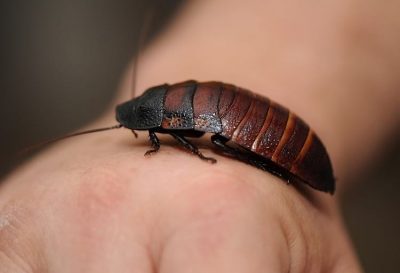The Acoustic Kitty Project: Weird Feline Spies of the ’60s
Share

Photo of a cat. (Alvesgaspar / Wikimedia Commons)
The Acoustic Kitty Project was a project undertaken by the Central Intelligence Agency to spy on the Soviets during the Cold War. The CIA was tasked by the United States government to obtain and analyze information to avoid threats to National Security. Kitty here indicates a cat, which was trained to spy on enemies and gain intel by listening in on their conversations. Through surgery, the cats would have a recording and transmission device fit into its body which served the purpose of the entire project. While most operations are classified and never reach the public, Acoustic Kitty was open to the public in 2001. The Central Intelligence Agency Directorate of Science and Technology took up this project because they saw a lot of scope in the way animal engineering was advancing. Another advantage was the way cats are mostly undetected by people and can move around without causing any suspicion.
Feline intervention
The CIA observed that cats are virtually undetectable and are present at the oddest locations with absolute ease. The intention to use cats to spy on the Soviets was rather sudden. While on a mission, a few federal agents observed that the place was crawling with cats and this was reported back to the headquarters, after which a plan sprang into action to launch the Acoustic Kitty Project.
The reasons for the Acoustic Kitty Project are obvious; cats are stealthy creatures that go unnoticed. They are also rather curious and sometimes poke where they don’t belong. With the right training, the CIA believed they could extract any required information. So to start with, the CIA hired a veterinary surgeon to perform a procedure on a test cat which involved implanting a small radio transmitter on its back and in its ear canal was a microphone. These two devices needed to be connected somehow, so a wire was placed across its fur along with batteries to power the two devices.
Cats are similar to humans and are able to distinguish between various noises. The CIA believed that it could be possible to train cats to eavesdrop only on selective and relevant conversations, unlike mechanical bugs that record everything in their vicinity.
A learning curve
Any kind of training has its problems, and this particular project had many bumps in its course. The first and foremost issue was the batteries that were put in place to power the devices. Since a cat is rather small in size, only small batteries were used, which didn’t last long enough as it should have. Another issue was the cat’s hunger. It was observed that every time it got hungry, it would avoid the mission at hand and focus on how to get food and stray off the path. Due to this little hitch along the way, the CIA equipped the cat with a wire that sent signals to the cat’s brain or neural system to overrule its hunger impulses, and stay on the mission at hand. Yet another problem was the machinery that was put onto the cat, the CIA needed to maintain its cover so it had to make sure the equipment wasn’t protruding out of the cat’s body. A high-tech listening device was not easy to accomplish due to the lack of sophisticated technology and equipment back in the day. A lot of time was devoted to the Acoustic Kitty Project along with considerable resources that surmounted to huge losses faced by the agency.
It took the CIA five years to complete the project and $20 million which if you account for today with inflation, amounts to nearly $160 million. The Acoustic Kitty was also given the name of a feline-android hybrid or what normal people would call a cyborg cat. After the rather long training process, the Acoustic Kitty was ready to take on its first mission. The mission was to eavesdrop on the conversation of two men sitting in a Soviet compound inside a park located in Washington, D.C. When the agents released the cat to partake in its mission what they expected was simple, that the cat would go along unnoticed and record the conversation of the two individuals in the Soviet compound and return unharmed.
As soon as the cat was released, it darted out across the street and it was abruptly hit by a taxicab and squashed to death. The death of this cat resulted in a loss of 20 million dollars and the project was scrapped by the CIA in 1967. According to a senior fellow at the National Security Archive in Washington, who goes by the name of Jeffrey Richelson, project Acoustic Kitty wouldn’t have survived very long even if the cat would have successfully completed the mission. The costs associated with it were too high and technology came around to be more sophisticated than the feline spies.
Acoustic kitty’s failure
What was initially a heavily redacted memo was now open to the public. The title of the memo was “Views on Trained Cats” and it classified Acoustic Kitty as not a complete failure. Scientists at the time made huge progress in animal engineering. According to the document, the highly trained cats did not serve the purpose of the CIA’s highly specialized needs and was not practical. The program also did not account for environmental and security concerns, if a mission were conducted on unknown grounds.
The memo also specified that the training indicated that the cats could move short distances effectively. This in itself according to them was a scientific achievement. Although this particular project was a failure, animal engineering did not stop. With a joint effort by the Pentagon’s Defense Advanced Research Projects Agency and the University of Berkeley, scientists managed to advance in the animal engineering field and remotely control insects, even something as small as a beetle with the sophisticated technology available. Rest assured, it can be safe to assume that conversations around cats are not dangerous in today’s world.
Enjoyed this article? Also, check out “Project MKUltra: CIA’s Cold War Conspiracy to Secretly Control Human Mind Goes Wrong“.
Fact Analysis:
STSTW Media strives to deliver accurate information through careful research. However, things can go wrong. If you find the above article inaccurate or biased, please let us know at [email protected]













